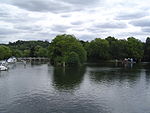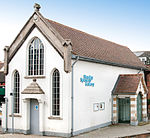Sol Studios

Sol Studios (also known as The Mill or The Sol) is a recording studio located in Cookham, Berkshire, England. The recording studio and control room are part of the complex property, along an old watermill and residential wheelhouse in the countryside. The property was bought in 1974 by Gus Dudgeon, and the recording studio was built in the following year. Gus ran the studio as his own production facility until running into financial trouble when the studio was sold to Led Zeppelin's Jimmy Page. Page decided to revert to the old name of "The Sol". HSH Music, a partnership of Rod Halling, Roy Shipston and Simon Holmes, purchased the studio from Page in 1988. They redeveloped it over the next two years into a commercial three-studio complex, utilising a quadruple garage on the site as Studio 2 and part of the old Mill Wheel housing as Studio 3. Chris Rea liked Studio 2 so much that he decided to block book it for a year at a time. In February 1994, HSH Music sold the site as a "residential" property. The new owners, however, failed to grasp that the building was built like a nuclear shelter and not really suitable for conversion. They subsequently sold it to Chris Rea, who owned it until 2006.
Excerpt from the Wikipedia article Sol Studios (License: CC BY-SA 3.0, Authors, Images).Sol Studios
Mill Lane,
Geographical coordinates (GPS) Address Nearby Places Show on map
Geographical coordinates (GPS)
| Latitude | Longitude |
|---|---|
| N 51.5571 ° | E -0.6998 ° |
Address
Mill Lane
Mill Lane
SL6 9QT
England, United Kingdom
Open on Google Maps









